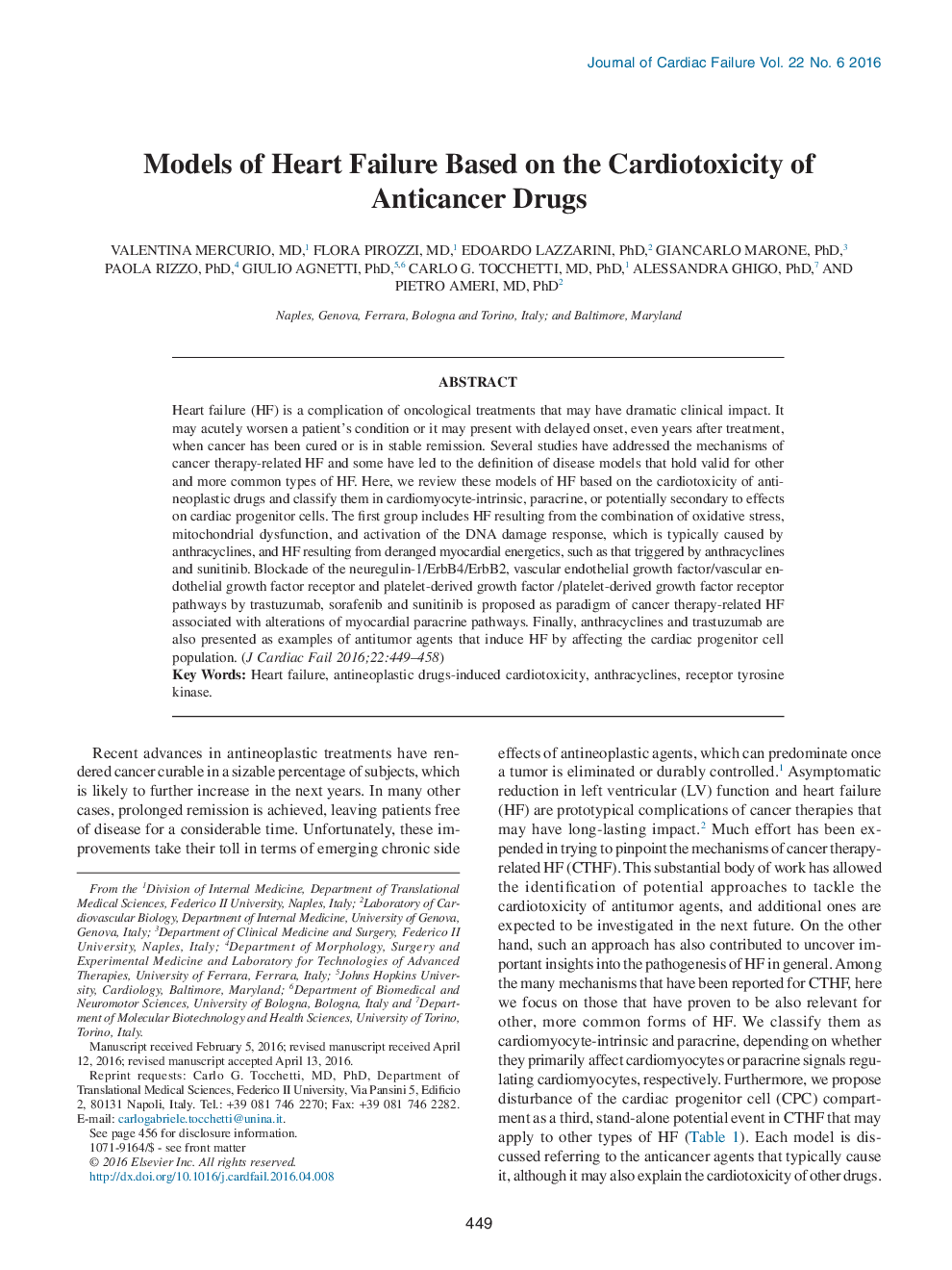| Article ID | Journal | Published Year | Pages | File Type |
|---|---|---|---|---|
| 2958277 | Journal of Cardiac Failure | 2016 | 10 Pages |
•Heart failure (HF) is a common complication of oncological treatments.•Models of HF can be classified based on the mechanisms of cardiotoxicity of antineoplastic drugs.•Myocyte-intrinsic forms include reactive oxygen species generation, mitochondrial, DNA, and metabolic damages.•Paracrine forms include blockade of ErbB2, vascular endothelial growth factor, and platelet-derived growth factor receptor.•Anthracyclines and trastuzumab can also induce HF by affecting the cardiac progenitor cell population.
Heart failure (HF) is a complication of oncological treatments that may have dramatic clinical impact. It may acutely worsen a patient's condition or it may present with delayed onset, even years after treatment, when cancer has been cured or is in stable remission. Several studies have addressed the mechanisms of cancer therapy-related HF and some have led to the definition of disease models that hold valid for other and more common types of HF. Here, we review these models of HF based on the cardiotoxicity of antineoplastic drugs and classify them in cardiomyocyte-intrinsic, paracrine, or potentially secondary to effects on cardiac progenitor cells. The first group includes HF resulting from the combination of oxidative stress, mitochondrial dysfunction, and activation of the DNA damage response, which is typically caused by anthracyclines, and HF resulting from deranged myocardial energetics, such as that triggered by anthracyclines and sunitinib. Blockade of the neuregulin-1/ErbB4/ErbB2, vascular endothelial growth factor/vascular endothelial growth factor receptor and platelet-derived growth factor /platelet-derived growth factor receptor pathways by trastuzumab, sorafenib and sunitinib is proposed as paradigm of cancer therapy-related HF associated with alterations of myocardial paracrine pathways. Finally, anthracyclines and trastuzumab are also presented as examples of antitumor agents that induce HF by affecting the cardiac progenitor cell population.
